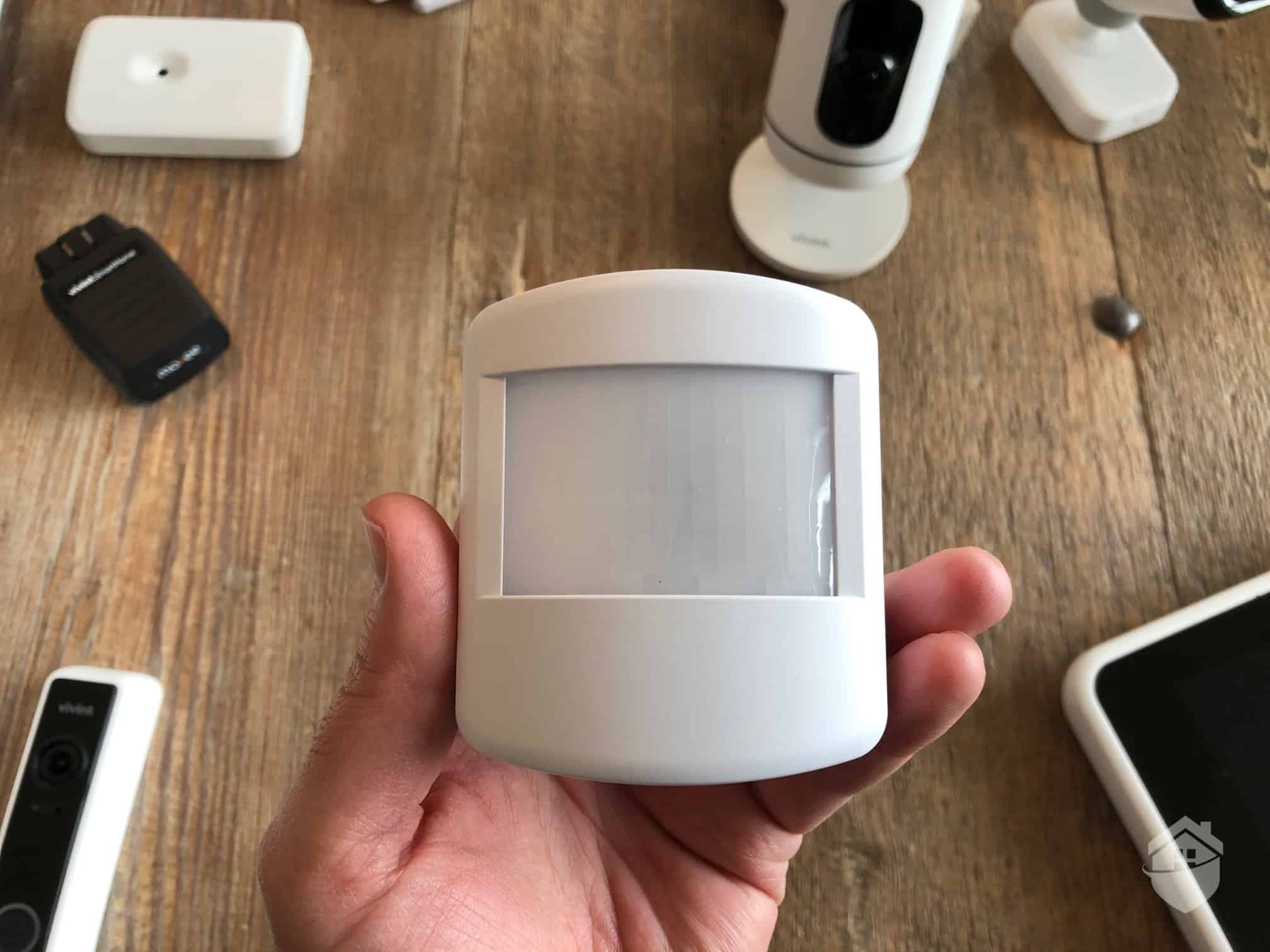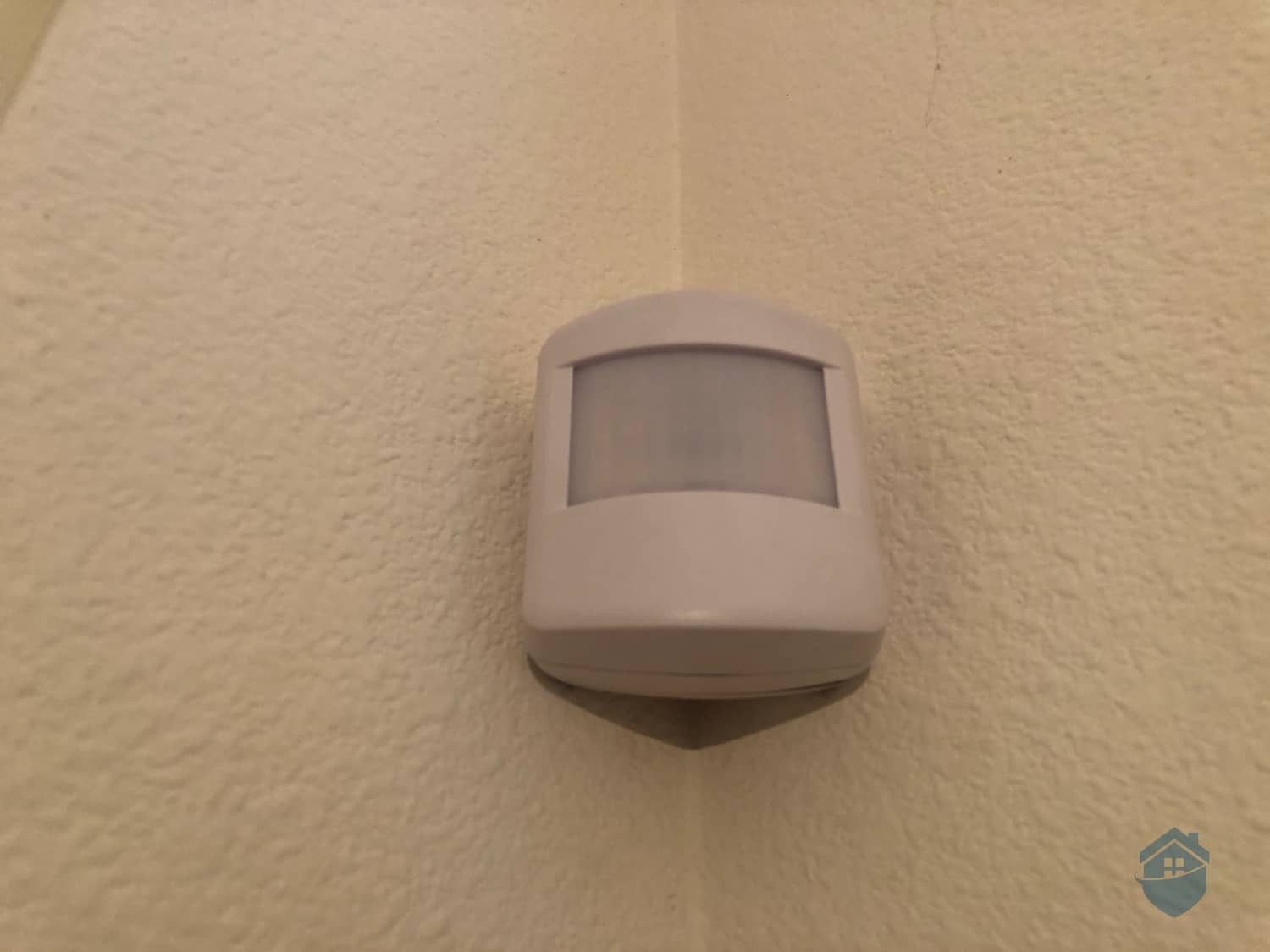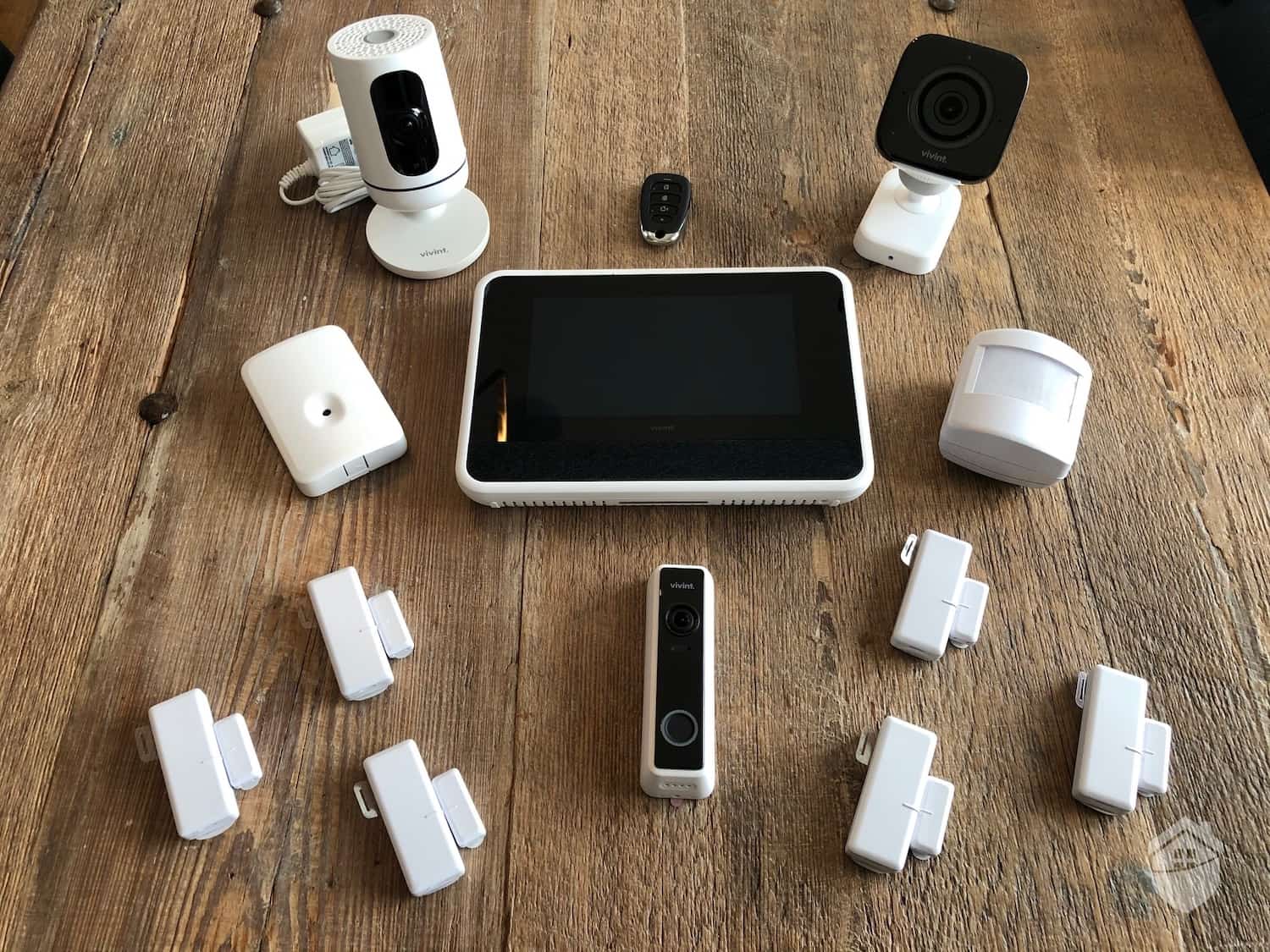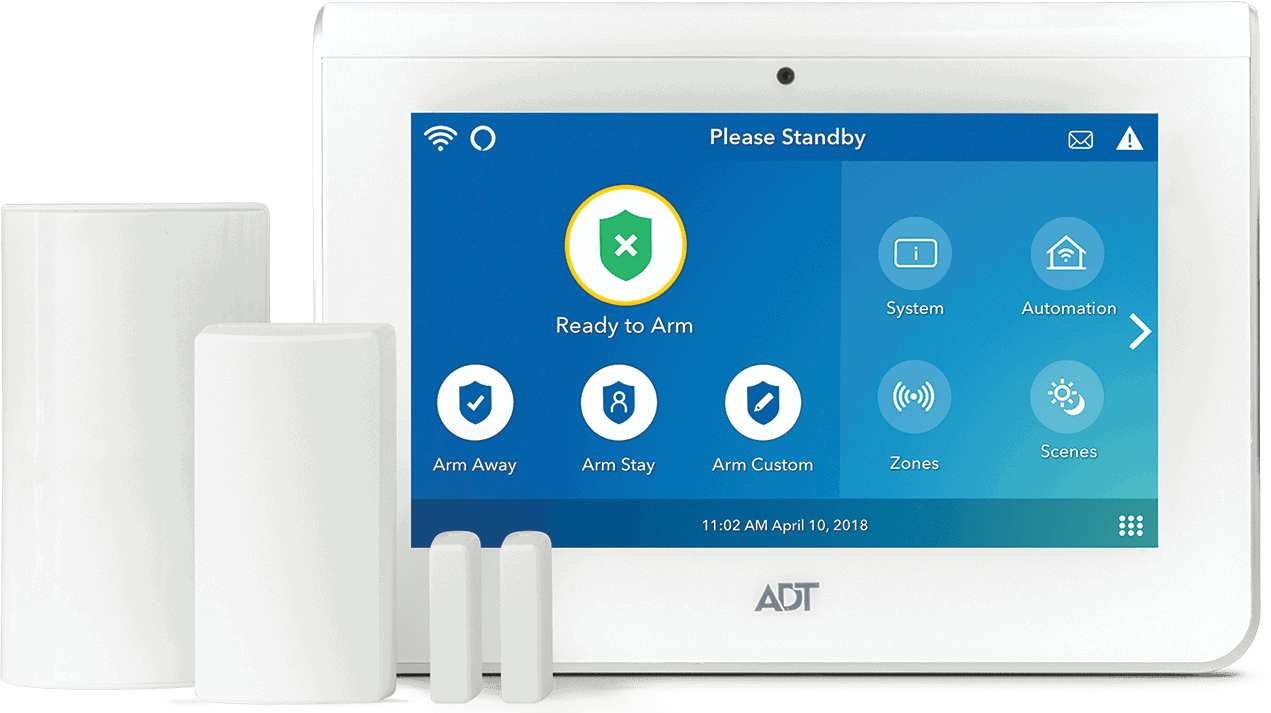
Vivint Motion Sensor
A security system should be more than just the sum of its parts. All of the pieces of equipment that comprise this system — your floodlights, your security cameras, your alarm system, your video doorbell — play a specific role. Individually, they can’t do a whole lot to keep your family safe, but together they create a comprehensive security network around your home.
Today we’re looking at one specific component of your home security system: the motion sensor. This guide is designed to help you better understand how motion sensors work, what the different types are, and how to properly deploy them in your home.
But before we get into all of that, let’s first answer two important questions.
Pro Tip: On the market for a security system? If so, be sure to check out our guide to the best home security systems available today.
What Is a Motion Sensor, and Why Is It Important?
You don’t need an advanced degree to understand what a motion sensor is. It’s exactly what it sounds like: a sensor that detects motion. When that motion is detected, that piece of equipment can do one of many things. It might turn on a floodlight, it might sound an alarm, or it might start a camera recording. Their main purpose is to detect — and ultimately prevent — unwanted visitors in your home.
That said, motion sensors can serve other purposes as well. These might include:
- Letting you know if a pet has entered a room they shouldn’t be in
- Remotely letting you know if your teenager got home safe
- Turning off lights when no one’s in a room
- Automatically opening your gate or garage when you return home
- Activating outdoor lights to spook nocturnal animals that might rummage through your trash
As you can see, the motion sensor is a pretty versatile piece of equipment, and its ultimate function depends on what it’s specifically activating. Opening a garage door and triggering an alarm have completely different use cases, but they both depend on motion sensors. In fact, we’d be willing to bet the majority of the security equipment in your home right now relies in some way on a motion sensor. That said, there are several different types, and your equipment’s functionality will depend on which type of sensor it uses. Let’s take a look at those now.
What Are the Different Types of Motion Sensors?
There are three primary types of motion sensors and a few unique sensors that are used in specific applications. Generally speaking, the most common of these sensors include:
Passive Infrared Sensor
A passive infrared sensor, or PIR sensor for short, detects infrared energy by scanning for changes in temperature. How does it detect motion? Well, the sensor creates a protective grid. If an object disrupts the temperature in too many grid zones or the temperature of the covered area changes too rapidly — as it would if someone walked through — the sensor triggers. It is “passive” because it doesn’t emit any energy; it just detects changes. This means it adds almost nothing to an energy bill and can run on battery power for months at a time.
Pro Tip: Most modern security cameras use PIR sensors to detect motion and start recording. If you’re interested in purchasing security cameras for your property, check out our roundup of the best security cameras of the year.
Microwave Sensor
Microwave sensors aren’t as common as PIR sensors, but they work in a similar way. The sensor itself sends out microwave pulses and measures how the pulses bounce back. If there’s disruption over a certain threshold, the sensor triggers. This type of sensor can cover a larger area than a PIR sensor, but it costs more and can be vulnerable to interference from certain electronic devices.
Dual-Technology Sensor
Also known as a hybrid sensor, a dual-technology sensor uses multiple detection methods — like the two mentioned above — to limit false alarms. It can also run a little more expensive than its more traditional counterparts, but it’s much harder to trick and delivers more accurate results.
There are a few other types of sensors you might encounter — vibration detectors, ultrasonic sensors, and reflective sensors, to name a few — but they all work on the same basic premise. They cast an energetic net and trigger when that network is disturbed.
Like we said above, there are a few types of sensors that are used in very specific applications. Those include:
Contact Sensor
A contact sensor attaches to a door and window and will trigger an alarm when the magnetic field between the base unit and the plate is disrupted. Most alarm systems use contact sensors to prevent unauthorized entry.
Vacancy Sensor
Ever been sitting in the bathroom at your office and suddenly the lights go out? That’s because the vacancy sensor didn’t detect movement for a specified duration and flipped the switch. Annoying as this may be, these sensors can help homeowners and commercial property owners save money on their power bills.
Pet-Immune Sensor
If you have pets, you might be worried about your motion sensor devices triggering constantly. This can get particularly frustrating if your security system is linked to your smartphone and you’re receiving alerts every time Rover bounds through the living room. A pet-immune sensor — usually hybrid — can be calibrated in such a way that it will ignore signatures under a certain size. A 190-pound person will trigger it, but a 12-pound cat won’t.
Pro Tip: If you’re looking for a home security system and you’ve got particularly energetic pets, you might consider reading our review of ADT. It offers plenty of DIY and professionally monitored solutions with pet-immune sensors.
Now that you understand the types of sensors and how they work, let’s talk about how and where to install these pieces of equipment.
Best Practices for Installing Motion Sensors

Vivint – Motion Sensor Installed
First things first, it’s always best to follow the manufacturers’ recommendations when it comes to installing any piece of equipment, but if it’s equipped with a motion sensor, it’s even more important. If the owner’s manual says your security camera should be placed at least six feet off the ground, it’s best to do exactly that.
That said, here are a few tips for installing motion sensors.
Think About How an Intruder Would Move Through Your Home
Install motion-detecting security equipment at “choke points” — areas someone would have to pass through to get from one area of your home to another. This includes entryways, hallways, and certain rooms. Every floor plan is unique, so think about how your space is used.
Go Higher Rather Than Lower
Most motion sensors are designed to be mounded a little over head height — six to eight feet is common. This way, the sensor will be able to cast a wide net and won’t have any blind spots. For more information on this, check out our guide to installing security cameras. The same rules generally apply.
Consider the Field of “Vision”
What is your motion sensor going to “see”? Will that tree branch blowing in the wind trigger too many false alarms on your floodlight? Do you want your sensor in high-traffic areas of the house or in areas where an intruder might sneak in? Think about what your motion sensor is going to “see” every day, and consider the information you’ll gather from that.
Pro Tip: Like “The Boy Who Cried Wolf,” you’re going to start ignoring your motion sensor if it triggers too often. Make sure you’ve installed and calibrated it in such a way that it’s alerting for the important stuff only.
Avoid Areas Where Heat Could Trigger False Alarms
If you’re using PIR sensors — which more than likely you are — avoid placing them where they’ll experience drastic changes in temperature, like near radiators, heating vents, and sunny windows.
Motion Sensors Work Best Detecting Objects Moving Parallel to Them
While a good motion sensor should be able to detect all motion around it, remember that it works best detecting motion moving across its view rather than coming directly toward it or going away from it. Install the sensor in the middle of the hallway rather than at the end of it.
You should now have a pretty good understanding of motion sensors — what they are, how they work, and how to best use them. There’s only one last question to answer: What’s this going to cost me?
How Much Do Motion Sensors Cost?
Here’s the good news: Stand-alone motion sensors are really inexpensive, maybe around $25 to $30. Here’s the bad news, though: They aren’t going to do much when it comes to protecting your home.
Like we said from the beginning, think of your security system as a comprehensive network of pieces of equipment working in unison. A motion detector that beeps every time someone walks past it doesn’t really do much when it comes to preventing burglaries.
You’re going to need motion sensors that do stuff. That means looking into motion-activated floodlights, security cameras, video doorbells, contact sensors, and more. They’re not going to break the bank. We’ve compiled a list of the best affordable security systems on the market to help you when you’re shopping around. Or, if you want to see what some of these sensors look like in action, you can read our Vivint sensor review.
At the end of the day, your home security system is going to be based almost entirely on various forms and flavors of motion detectors. Now you know what they are, how they’re used, how to install them, and how to shop for them.




